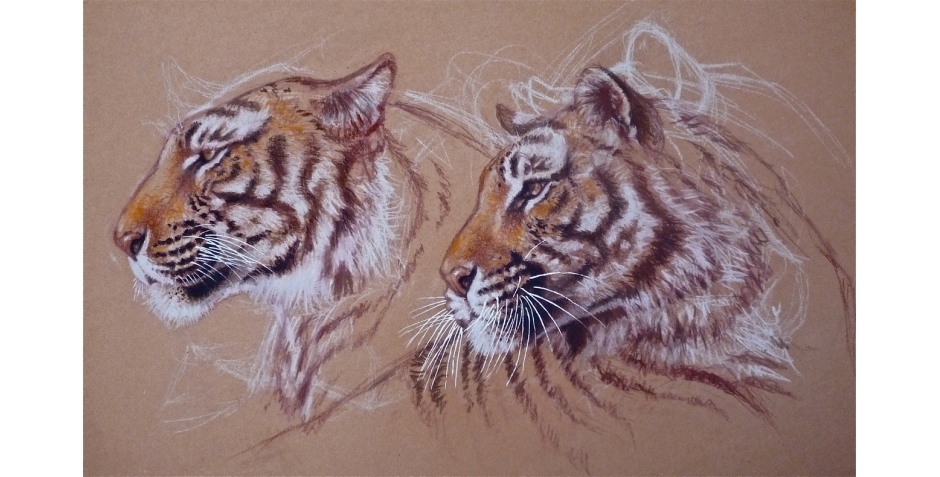
Priscilla Barrett 1944–2021
Priscilla Barrett (Prill) was born in Cape Town on 4th May 1944. From a young age, she had a passion for the natural world and a love for animals. After university at Cape Town where she studied English, she travelled with her first husband, Peter Edwards, and spent time working for the UN in Namibia. Peter used to tell a story of an evening when they camped near a bore hole from which water had been pumped up into a high tank, with troughs for cattle. In the night they were woken by trumpeting elephants. Several bulls were drinking from the top of the tank. But there were young elephants who couldn’t reach. And the troughs were dry. They were squealing with vexation. While Peter cowered, Prill made her way quietly through the mayhem to turn on the tap to fill the troughs. As her friend Nick Humphrey said in a tribute at her funeral, Prill was a horse whisperer before anyone had heard of horse whisperers.
Fascinated by animal behaviour, Peter and Prill came to England in 1969 and began work at Cambridge University’s sub-department of Animal Behaviour at Madingley. Here Prill became a research assistant to Patrick Bateson, working principally on domestic cats. Increasingly she was drawing in her spare time, and eventually she stopped working at Madingley to concentrate on drawing and illustrating animals, mostly mammals. Initially she illustrated papers and articles by friends and colleagues but this soon extended to books. Her long time collaborator, David Macdonald adds this tribute:
“In what I recall now as somehow reminiscent from a scene in a Harry Lime movie, I first met Prill on a crowded railway station. I’d been visiting Madingley, home of Cambridge’s famed sub-department of Animal Behaviour, to talk about cat behaviour on which she, rather recently arrived from South Africa, was working. Orson Welles could not have done better in locating our next encounter – a deserted village in Italy’s Abruzzi mountains in pursuit of wolves – perhaps the start of a career-long appetite for drawing canids, although in recent weeks I’ve had nostalgic cause to find early papers on farm cats, badgers and jackals, all beautifully illustrated by Prill. The big jump to books began in the 1980s – Prill was the main illustrator of my Encyclopaedia of Mammals: indeed her marvellous frontispiece of a tarsier helped sell the concept, and after that, as artist co-author, she painted every species in my Harper Collins Guide to European Mammals and the companion European Mammals (in pen and ink) – three huge tasks, hundreds of artworks, and rave reviews of her work. From then on, she illustrated every book I wrote, including the frontispieces to a trilogy of OUP books on the Biology and Conservation of, successively, wild canids, wild felids and, as recently as 2017, the Musteloidea. It is hard to imagine a more perfect working relationship: as I strove to nurture the prose, Prill tirelessly, accurately and beautifully brought it alive with images that were more than half the story. Few artists in a generation have mastered the detail of mammalian behaviour so insightfully, and while she is gone, her golden jackals, lion, mink, even harvest mouse, still adorn my wall.”
Prill parted with Peter Edwards in the early seventies and later married Gabriel Horn, Professor of Zoology at Cambridge. Together they renovated a derelict barn, Jack of Clubs, at the edge of the fen in Lode, which became their home. This was a period when she created some of her most beautiful illustrations, many of them for books by David Macdonald and Luke Hunter.
Many of the originals for these illustrations were exhibited and sold in the Cambridge University Museum of Zoology where she shared the space with the collections, including Darwin’s Finches. These exhibitions proved very successful and she continued to exhibit there every few years. The last was in 2011 when she showed the original work for ‘Field Guide to the Carnivores of the World’ (Luke Hunter and Priscilla Barrett, New Holland Publishers, 2011)
She was elected to the Society of Wildlife Artists in 1987 and exhibited regularly at the annual exhibition in the Mall Galleries until 2011.
In 1999, Gabriel became Master of Sidney Sussex College, Cambridge and Prill took on a new role as Master’s wife. She carried this out with distinction and was much loved by all members of the college. Her empathy for people as well as animals was exceptional.
While at Jack of Clubs, Prill followed the lives of the animals around her including the woodpeckers that drilled into the wooden cladding on the house, and the kestrels breeding nearby. She also became a multiple champion in Agility with her beloved Border terriers. Agility is where dogs are trained to negotiate different obstacles through a set course. It tests the dog’s fitness and the handler’s ability to train and direct the dog. In her last few years, she was working on a book about the relationship between dogs and people.
Not long after Gabriel’s death in 2012, Prill suffered a minor stroke but continued to draw and work with Agility. Following a number of further strokes in the last two years, she passed away peacefully at a nursing home on 16 February 2021.
Dafila Scott